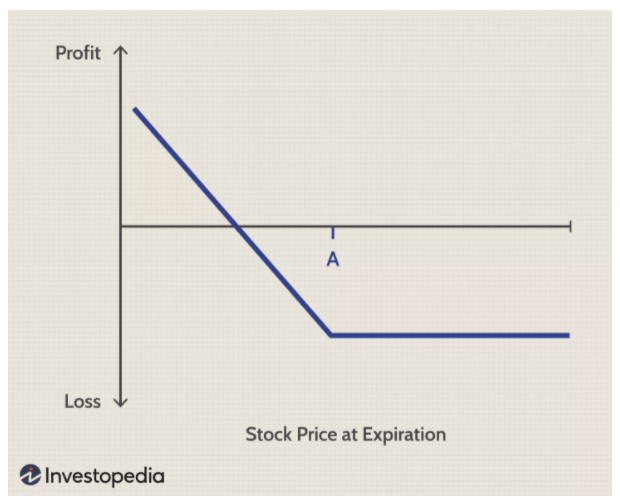Ever since the COVID-19 spread throughout the globe, it affects everyone and anyone from different economic statuses.
Some people lost their jobs since companies have to lay them off in an attempt to save their operational costs. On the other hand, some people found a silver lining in this pandemic.
People started opening up their businesses in different fields, and some began working from home. In addition, some people invested in various assets such as stocks, commodities, and currencies.
They took the risk of buying assets that have different advantages and disadvantages. There’s no certainty in these kinds of investments; that’s why people would think carefully before investing.
Having investments like this allows trading with other people. There is something we call “Option Trading Strategies.”
Option Trading plays a crucial role in the process of selling and buying stocks. Generally, options trading is allowing someone to have the ability to control it instead of ownership.
Options trading allows someone to have the right to buy or sell a stock at a set price. This will happen for a given amount of time.
There are two kinds of options trading: call and put options. However, today we’re going to talk about the put option.
You can watch the video below to learn a little information about the Put Option.
What is Put Option?
Put options allow owners to sell an amount of stock or the underlying security. It will come at a price and only under a specific period. It is a contract that gives no obligation owner rights.
Basics to Understanding Put Option
It’s essential to get a glimpse of how put options operate. Here are some of the facts:
- An owner can sell his/her underlying security at a predetermined price called a strike price.
- It’s common to trade put options in different underlying assets, such as currencies, stocks, bonds, commodities, indexes, and futures.
- Call options can sometimes be confused with put options. Call options are different types of options trading.
NOTE: The call option gives buyer rights to an underlying asset at a specific price. Unlike the put option, the holder can purchase them anytime before the option contract’s expiration date.
How Do Put Options Work?
Put options become more valuable when the price of the stock decreases. In contrast, a put option will lose value when it increases.
When the assets are exercised, put options give the underlying asset a short position. That’s why they are usually for presuming the downside price action or for the purposes of hedging.
On the contrary, most investors utilize put options for managing risks and creating a strategy. For such, they call it “protective put.”
Investors use this strategy for investment insurance. Put option as investment insurance ensures that the loss in the asset doesn’t surpass a specific amount.
Generally, a put option’s value decreases when the expiration approaches because of the impact of time decay. Time decay increases when the time to end becomes closer because there’s little time to realize a profit from the trade.
So, when options lose their time value, the leftover is called “intrinsic value.” It’s basically the same as the difference between the underlying stock price and the strike price.
Options that have intrinsic value are called “in the money” or ITM. On the other hand, something called “out of money” or OTM, and “at the money” or ATM. These two put options with no intrinsic value because there are no benefits in choosing either of the two.
Stockholders have the choice of short-selling their stock using the current higher market price. This is a good option when compared to the out-of-money put option.
You won’t want to take the risk with undesirable strike prices.
On the contrary, short selling is usually riskier than buying many options outside the bear market.
Extrinsic value or time value is shown in the premium of the chosen option. If the put option’s strike price is $20, and the stock is trading at $19, the intrinsic value is $1.
The put option can be sold for $1.35, which could mean that $0.35 is the time value.
The extra $0.35 is the time value; significantly, the underlying stock price may change before the option’s expiration comes. Different put options have the same asset and can be combined to create put spreads.
Notably, there are factors that an investor should take note of in selling put options. It is essential to understand the option contract’s profitability and value in considering a trade.
Also, the risk when the stock starts falling past the point of profitability. On the other hand, the payoff of with put options during expiration is shown in the picture below:

How Can I Buy Put Options?
Usually, investors are buying put options to protect their other investments. They make use of put options as a kind of insurance.
Basics to Buying Put Option
Here’s a rundown of what you need to know when buying put options:
- Investors may purchase put options to cover up the holdings of their underlying asset. So, when there is a depreciation in the underlying assets, the investor may sell his/her holdings at the strike price.
- Put option buyers create profits by holding a short-selling position. Conversely, the put options’ owner can profit from it when the stock price diminishes below the strike price.
- An owner of the put option can make a profit before the expiration period.
- Put buyers can make use of the opportunity during the strike price within the expiration period.
People exercise their option by selling their underlying stock that puts the seller in the specified strike price. This event makes the buyer sell the stock at an above-the-market price, which creates profit for a buyer.
A Practical Example on Buying Put Option
Let’s assume that the stock of SNSD Company is currently trading at the price of $50. In this scenario, put contracts are being sold at $3, and it has a strike price of $50.
These put contracts also have an expiry period of six months. In sum, one put can cost $300 (because one put represents 100 shares in an SNSD company).
That time, Jessica buys one put option at $300, which means that it is 100 shares of the company. Jessica expects that the SNSD’s stock price will decline.
The stock price should fall to $40 by the time the put option expires.
Once the price drops to at least $40, Jessica can exercise her put option to sell the stock at $50. If Jessica does this, she can earn 100 shares times $10 to $1,000.
Her net profit will be $700 at the range of $1000 to $300 option price. Even so, if the stock stays above the strike price, the put option will expire worthlessly.
Jessica’s loss from the investment will be capped at the price Jessica’s paid for the put.
How to Sell a Put Option?
People can also engage themselves in selling a put option to make a profit instead of buying them.
It can give sellers sell options with a beam of hope that they will lose the value. Once that happens, they can benefit from the premiums they received for the options.
Once the options have been sold to some buyer, the seller should buy the stock or asset. These can be purchased at the strike price because the option is exercised.
The stock price has to stay the same or increase beyond the strike price to make the seller create profits.
There are times that the price of the underlying asset falls under the strike price before the expiration date. The buyer can make a profit from it if he/she makes it on sale.
The buyer has the right to sell their put options. On the other hand, the seller has the obligation and should buy put options at a specific strike price.
However, if the options stay at the same price or above the strike price, the buyer is bound to receive a loss.
Where Can I Trade Options?
Most of the other types of options, put options, can be traded through brokerages. Brokerages are companies that buy or sell assets or goods for their clients.
Besides, some brokers specialized in benefits and features for option trades. For people who have an interest in options trading, some brokers specialize in options trading.
It is essential before looking for a broker to know one’s investment needs. A trustworthy broker will provide a person’s choices and will educate you about the possible investment needs.
They will give a potential investor the classification and identify a good match in their investment needs.
Learned Something New Today?
In a world where everything is changing quickly, there are many possible choices wherein a person can make money. Investing in underlying assets and stocks can be an option.
A person needs to understand everything before taking the risk of investing. It is something that a person can’t stop doing because they will lose big time.
That’s why it is essential to understand every word that they use because money doesn’t grow from trees.
Find this article interesting? Make sure to check out the following articles for more exciting information:





